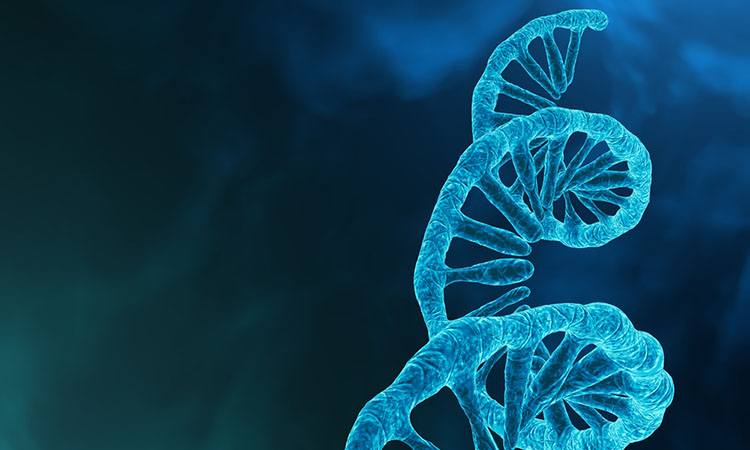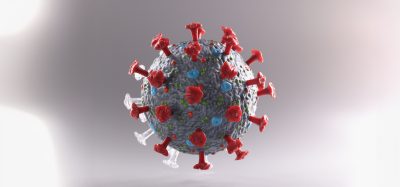The promise of vectors targeting the LDL receptor
Posted: 4 June 2024 | Dr Pascaline Lécorché (Vect-Horus), Ellen Capon (Drug Target Review) | No comments yet
In this Q&A, Pascaline Lécorché, Head of Chemical Biology at Vect-Horus, outlines the potential of RNA interference therapeutics and the challenges of their use in vivo. There are several strategies to overcome these, and why peptide-based vectors targeting the LDL receptor are a promising approach.


What is the mechanism underlying RNA interference (RNAi) and how does it contribute to gene silencing in mammalian cells?
The underlying mechanism of RNAi is based on the uptake by the cytoplasmic RNA-induced silencing complex (RISC) of small (21–24 nucleotides in length) interfering RNA (siRNA) that bind in a specific base-pairing manner with their complementary mRNA sequence, thereby triggering their degradation and suppressing expression of disease-causing proteins. Theoretically, therapeutic siRNAs have the potential to treat any gene-related pathology thanks to their potency, specificity, and duration of effect.
Why do therapeutic siRNAs face challenges in systemic administration, particularly regarding their accumulation and clearance in the kidneys?
siRNAs are very potent therapeutic molecules but their use in vivo is limited because of their intrinsic physico-chemical properties: they are highly charged compounds and when based on natural oligonucleotides, their typical half-life is between five and 10 minutes due to highly active nucleases. These challenges concerning systemic or local administration thus include short half-life, rapid clearance rates, nonspecific binding, cell membrane penetration inability, ineffective endosomal escape, endonuclease degradation and immunological responses.
Can you outline the various delivery systems being explored to overcome the challenges associated with the specific delivery of siRNAs to tissues of interest?
Since the siRNAs have become an attractive way to treat a wide variety of human diseases through different means of regulation of gene overexpression, different strategies have been developed to specifically address siRNAs to tissues of interest. These include encapsulation of siRNAs in nanoparticles such as LNPs and molecular conjugation to ligands that recognise receptors involved in an endocytic process. LNPs mask the siRNA charge, protect it from degradation by RNases, and facilitate endosomal escape into the cytoplasm. However, LNPs are difficult to target to extrahepatic organs and hence lack specificity. The progress in siRNA chemistry has led to highly optimised siRNAs resistant to nucleases, and consequently usable in vivo. Their conjugation to ligands of specific receptors expressed in specific tissues is one of the most promising strategies to specifically deliver siRNAs inside the cells of targeted organs and tissues. The most famous example of this strategy has been the development of N-acetylgalactosamine (GalNAc)-siRNA conjugates for highly efficient delivery of oligonucleotides to the liver. This opens the way to other ligand-siRNA conjugates able to target other organs.
What are the characteristics of the LDL receptor (LDLR) that make it an attractive target for the delivery of therapeutic molecules, including siRNAs?
The LDL cell surface receptor (LDLR) represents an attractive target for the development of innovative active drug-targeting strategies. These include (i) high uptake and recycling activity thereby providing an effective cellular entry route for drugs acting at the intracellular level; (ii) enrichment in some normal tissues where it contributes to major physiological processes, such as cholesterol metabolism in the liver, synthesis of major steroid hormones in the adrenal cortex and gonads, and rapid cell growth in duodenal crypts; and (iii) upregulation in several human cancers.
How was the family of peptide-based vectors targeting the LDLR identified and optimised, and what are the key criteria these vectors needed to meet for further clinical studies?
We identified and optimised a family of peptide-based vectors that target the LDLR and that meet the following requirements: (i) high selectivity and nanomolar affinity for both the rodent and human LDLR to allow preclinical studies, while managing risk for further clinical studies; (ii) minimal sized 8 amino acid cyclic peptides, chemically optimised for increased stability; (iii) absence of competition with LDL, a major endogenous ligand of the LDLR; (iv) proven conjugation versatility while retaining LDLR uptake capacity, allowing delivery of a variety of cargos ranging from small organic molecules, peptides, siRNAs, and proteins, including antibodies; and (v) in vivo validation of their specific LDLR-dependent tissue distribution in wild-type or ldlr−/− mice.
Could you explain the development process of the VH4127 peptide ligand and its conjugation to a siRNA targeting SOD1 mRNA, including the evaluation of its LDLR-binding affinity and plasma stability?
The VH4127 (cyclo[(D)-Cys-Met-Thz-Arg-Leu-Arg-Gly-Pen]) peptide ligand was obtained by high-throughput screening of phage display peptide libraries on engineered cell lines expressing the mouse and human LDLR. This peptide was further chemically optimized for optimal LDLR-binding affinity and in vitro plasma stability. The design of the siSOD1-VH4127 conjugates involves three partners: (i) the peptide ligand allowing specific tissue-targeting; (ii) the pharmacologically active siRNA moiety; and (iii) the linker that is essential for linking these two functional entities while retaining their biological functions. After the conjugation, we validate that the conjugates retain their binding for the LDLR and that the conjugates are stable in plasma to be further used in vivo.
About the author
Pascaline Lécorché, Head of Chemical Biology, Vect-Horus


Pascaline Lécorché has been Head of Chemical Biology at Vect-Horus, a French company which is enhancing the transport of therapeutic and imaging agents by using a unique vector technology, is an experienced chemist and biologist with a focus on research and development in the life science industry. She focuses on the design of targeted peptide vectors and of the peptide conjugates, according to the properties of the therapeutic agent. Pascaline holds a PhD in chemistry-biology from the Pierre and Marie Curie University in Paris.
Related topics
Analysis, Peptide Therapeutics, RNAs, Targets, Therapeutics
Related organisations
Vect-Horus
Related people
Dr Pascaline Lécorché (Vect-Horus)








